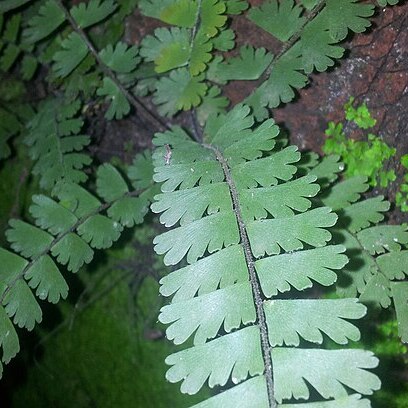Plants terrestrial or epilithic, 10-40 cm tall. Rhizomes erect, short, scales deeply castaneous, lanceolate, margins entire. Fronds clustered; stipe castaneous, 1-10 cm, densely dark brown or brownish multicellular hirsute; lamina 1-pinnate, lanceolate in outline, 15-30 × 2-4 cm, base slightly narrow; rachis same color as stipe and similarly sparsely hirsute, glabrescent when old, apex usually prolonged into a whiplike stolon rooting at tip to form new plantlet; pinnules 20-44 pairs, 5-8 mm apart, alternate, or lower ones subopposite, horizontally spreading or slightly obliquely spreading, lower pinnules gradually reduced, middle ones ± dimidiate, suboblong, 0.7-2 × 0.6-1 cm, papery, brownish green, both surfaces sparsely multicellular hirsute and densely pubescent, base asymmetrical, lower margins substraight and entire, upper and outer margins deeply divided into many narrow lobes, upper side truncate; lobes linear, margins entire, upper part again lobed into fine linear segments, apex truncate, fine segments truncate or few dentate at apex; veins multidichotomously branching, visible on both surfaces. Sori 5-12 per pinna; false indusia dark brown, orbicular or oblong, hairy, upper margins flat and straight, entire, persistent. Perispore granular. 2n = 90.
More
A fern. It grows 10-40 cm tall. It has a short erect rhizome covered with scales. The stalk from the rootstock to the leaf blade is 1-15 cm long. It has brown hairs. The leaves are narrow and have leaflets along the stalk. The leaves are 8-35 cm long by 2-4 cm wide and there are 20-44 pairs of leaflets. These become smaller towards the top.
It is a tropical plant. It grows on rocks and in rock crevices including limestone. In China it grows in forests and mountain valleys. It grows in shaded places. In Thailand it grows up to 1,000 m above sea level. It needs to be kept moist. It suits hardiness zone 9-11.
More
Common in thickets in the Philippines.

